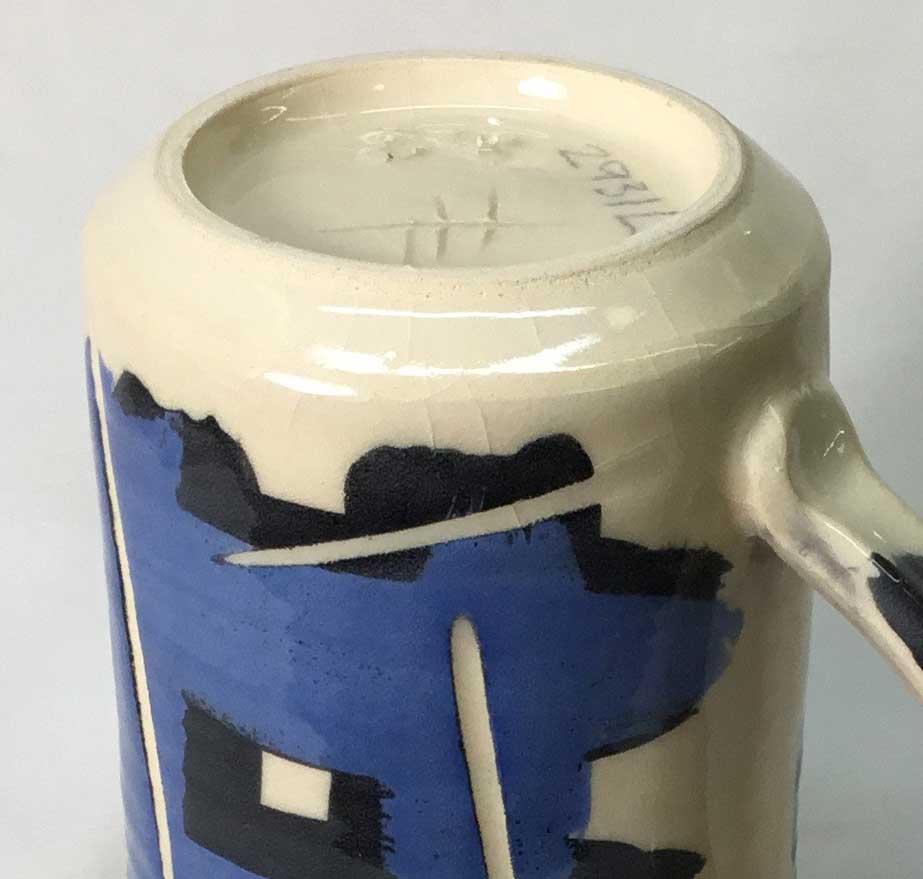Crazing due to moisture expansion in a porous low fire body
The clear glaze on this cone 03 mug survived a 300F-to-ice-water insight-live.com/glossary/89">thermal shock without crazing (IWCT test). However, in the process, water was absorbed by the bare foot ring and dispersed into the porous matrix of the lower part of the mug. Moisture expansion occurred as a result and produced the crazing. Over continued use (and rewetting of the base) the entire piece would eventually craze. Calcium carbonate is often added to low fire bodies to prevent this expansion.
Pages that reference this post in the Digitalfire Reference Library:

This post is one of thousands found in the Digitalfire Reference Database. Most are part of a timeline maintained by Tony Hansen. You can search that timeline on the home page of digitalfire.com.
